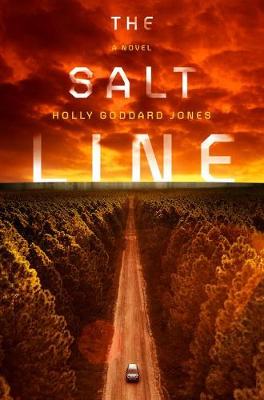Reviewed by Terri M. LeBlanc on
I received this book for free in exchange for an honest review. This does not affect my opinion of the book or the content of my review.I’m a sucker for dystopian fiction. I love being a voyeur as other people’s lives self-destruct and they are forced to find their ways in a new world with new rules. How will they survive? What lengths will they go to protect everything and everyone they hold dear? What will they let go of in the end? What will they discover about themselves? The answers to these questions hold an immense amount of power over me as a reader and I was looking forward to getting them answered in The Salt Line.
The Salt Line, I quickly discovered, is not a plot-driven story, it’s a character-driven story and by the end I was left feeling flat, confused and uncaring. None of the characters are memorable and the structure of the tick-infested world is never full explained. A book I had high hopes for fell hopeless flat.
The story is told from multiple point of views—so many points of view it’s bordering on being like a book in George R.R. Martin’s The Song of Ice and Fire series. Now I don’t mind multiple points of view, but it’s important for me to be drawn to one or two characters whether that connection is driven by love for that character or loathing. There isn’t a SINGLE character in The Salt Line I actually cared for. Not enough time is spend with any one character to give you enough time to care if they live or die should they get bitten by a tick or shot (there’s LOTS of guns being waved in this book).
None of the main characters made the decision to go on the expedition into America’s Appalachian Mountains which are invested by life-threatening ticks. Wes was pushed to go to secure a business deal. Edie was pushed to go by her annoying pop-star boyfriend. Marta was pushed to go by her husband, David. Even the expedition leader was pushed into his job. There was no true, palpable motivation for anyone to be out in the Mountains risking their lives. They were just there being moved about like pieces on a chess board. I was left asking why should I care about these people? Why out they even out here? Where is the ACTION?!
And it turns out the threat from the ticks is somewhat of a lie. If one follows the strict protocol explained by the expedition team (or even just stays in the walled cities), it appears there is a low chance a bite and potential death will occur. In fact, just one person on the adventure died from a tick bite and she, in my opinion was a “red shirt.” So where does the threat come from in the story? What puts the characters in danger?
Well, there’s a strange layer of political machinations that involve Wes, Marta’s husband, a village of folks who have discovered a way to repel the ticks and the lies the government tells to keep its citizens safe (these lies are hinted at, but are never fully explained/revealed). It was hard to pin down what exactly was business dealings were going on and what was at stake especially when a particularly disappointing side effect was revealed related to the tick repellant (boy, did THAT reveal fall flat—especially the second time is was brought to light). I’m assuming the political intrigue was meant to cause tension, but it merely causes confusion. We spend so little time with the characters learning their motivations and desires that we never truly understand what is at stake for each individual if the deal proposals actually come to fruition. On top of that, so little is known about the actual political structure and zone mechanics, it’s hard to understand what is at stake for the country if the deal proposals actually happen.
I wish that more time was spent on both the character development and the world-building to give more weight to the story and heart to the characters. I wanted to like these people, I wanted to fear this tick-infested world, but in the end, disappointment reigned.
This review was originally posted on Second Run Reviews
Reading updates
- Started reading
- 4 November, 2017: Finished reading
- 4 November, 2017: Reviewed
